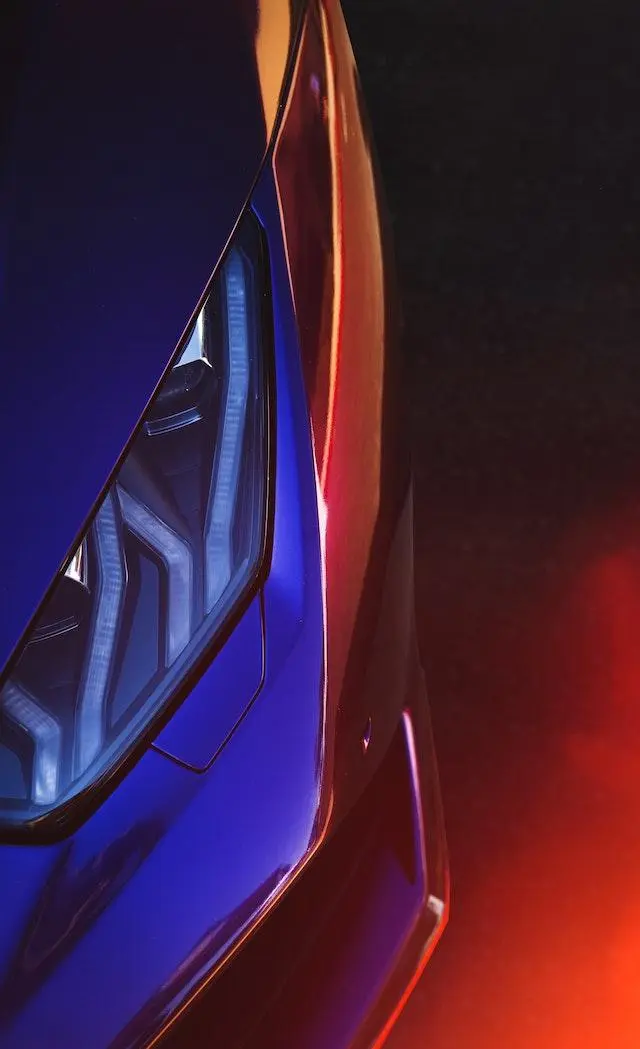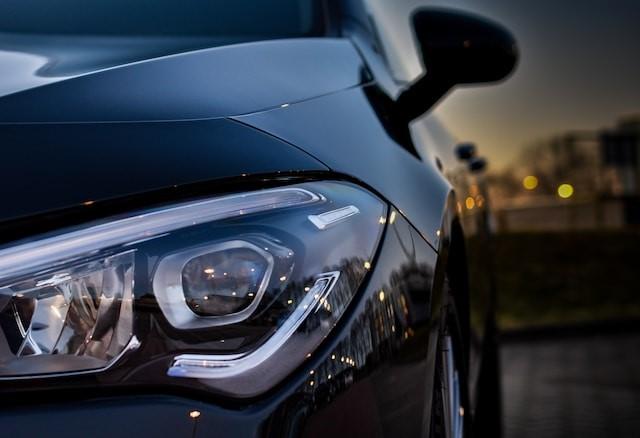Car Headlights Explained
Published Date: 3rd Jul 2023
 Car headlights, also known as headlamps, are crucial automotive components mounted on the front of a vehicle. Their primary purpose is to illuminate the road ahead, ensuring optimal visibility during nighttime driving and in conditions where visibility is limited, such as fog or heavy rain. These lamps enhance safety by emitting a powerful beam of light, allowing drivers to identify potential hazards and navigate their way effectively. Whether guiding us through dark, winding roads or providing a guiding light in adverse weather, car headlights ensure a secure and confident driving experience.
Car headlights, also known as headlamps, are crucial automotive components mounted on the front of a vehicle. Their primary purpose is to illuminate the road ahead, ensuring optimal visibility during nighttime driving and in conditions where visibility is limited, such as fog or heavy rain. These lamps enhance safety by emitting a powerful beam of light, allowing drivers to identify potential hazards and navigate their way effectively. Whether guiding us through dark, winding roads or providing a guiding light in adverse weather, car headlights ensure a secure and confident driving experience.
NEW 73-PLATE CAR DEALS
There are two main types of car headlights: high beams and low beams. High beams are used for driving on dark roads, while low beams are used for driving in areas with other cars or pedestrians. High beams produce a wider beam of light that illuminates a long distance ahead of the vehicle. In comparison, low beams have a narrower beam of light that illuminates a shorter distance ahead of the car. Using high beams in areas with other vehicles or pedestrians is prohibited in numerous countries. This is because they have the potential to blind drivers and pedestrians alike, significantly reducing their visibility and compromising safety.
Car headlights also have several other uses, such as:
- Daytime running lights (DRLs): DRLs are headlights turned on automatically when the vehicle is started. They provide a low illumination level during the day, which can help make the car more visible to other drivers.
- Fog lights: Fog lights are headlights that produce a beam of light designed to penetrate fog. They are often yellow or amber and are mounted lower on the vehicle than regular headlights.
- Adaptive headlights: Adaptive headlights can swivel or tilt to track the vehicle's direction. This feature guarantees the driver an unobstructed view of the road ahead, particularly during turns or corners.
- LED headlights: LED headlights are becoming increasingly common in cars. They are more efficient than traditional headlights, and they can last longer.
Car headlights are an important safety feature and should be expertly maintained to ensure they work properly.
Different Types of Car Headlights
The main types of headlights in the UK are as follows:
 Halogen headlights: Common and inexpensive, they use halogen gas to produce light. However, they are less efficient than other types.
Halogen headlights: Common and inexpensive, they use halogen gas to produce light. However, they are less efficient than other types.
- Pros: The most prevalent and conveniently accessible headlight variant is cost-effective to buy and replace. Its installation process is straightforward and hassle-free.
- Cons: Less efficient when compared to other types of headlights, Emit a warmer and slightly less bright light, and Shorter lifespan.
Xenon headlights: Brighter than halogen headlights, they utilise xenon gas for a whiter light output. They are more expensive and require special bulbs.
- Pros: Brighter and whiter light output, improving visibility, Longer lifespan compared to halogen headlights, Producing a more focused beam, illuminating the road ahead effectively.
- Cons: More expensive to purchase and replace, Require special bulbs and specific equipment for installation, Can cause glare for oncoming drivers if not properly adjusted.
NEW 73-PLATE CAR DEALS
LED headlights: These headlights use light-emitting diodes (LEDs) and offer high efficiency and durability. They come in various colours and are becoming increasingly popular.
- Pros: Highly energy-efficient and long-lasting, Produce a bright and focused beam of light, Available in various colours and designs, Quick response time, allowing for instant illumination.
- Cons: Higher initial cost compared to halogen headlights, Repairs or replacements may be expensive, Potential for light scattering, affecting other drivers' visibility if not properly designed.
Laser headlights: Laser headlights are highly efficient, emitting an exceptionally bright light beam. However, their current limited availability and high cost pose certain challenges.
- Pros: An exceptionally bright and focused beam of light, Highly efficient and provide long-range visibility, Sleek and compact design, allowing for more versatile headlight shapes.
- Cons: Currently limited availability in the market, High cost, making them an expensive option; Laser technology requires strict safety regulations.
Matrix headlights Are LED headlights that can adapt light patterns based on driving conditions. They provide a wider beam for dark roads and a narrower beam for city driving.
- Pros: Adaptive lighting technology adjusts to different driving conditions, Provides optimal visibility and enhances safety, and Can automatically dim or switch off specific sections to avoid glare for other drivers.
- Cons: Higher cost compared to standard LED headlights, Complex design, requiring sophisticated control systems, Repairs or replacements may be more challenging and expensive.
Which type of Car Headlights are better?
The best type of headlight depends on your specific needs and preferences. As we have already discussed, each headlight type has advantages and disadvantages.
Here's our general overview to help you decide:
 Halogen headlights: They are the most common and affordable option. If you have a limited budget and don't require the brightest or most advanced lighting, halogen headlights can be a suitable choice.
Halogen headlights: They are the most common and affordable option. If you have a limited budget and don't require the brightest or most advanced lighting, halogen headlights can be a suitable choice.
Xenon headlights: They offer a brighter and whiter light output, improving visibility on the road. If you prioritise better illumination and are willing to invest in a more advanced lighting system, xenon headlights can be a good option.
LED headlights: LED headlights are highly efficient, long-lasting, and available in various colours. They provide bright and focused lighting while being energy-efficient. LED headlights can be great if you value durability, energy efficiency, and customisable options.
Laser headlights: Laser headlights offer the highest level of brightness and efficiency. They can project a beam even brighter than LED headlights. However, they are currently limited in availability and come at a higher cost. Laser headlights are a premium option for those seeking the latest technology and top-tier performance.
Matrix headlights: Matrix headlights are an advanced form of LED headlights that offer adaptive lighting, adjusting to driving conditions. They provide optimal visibility and enhanced safety. Matrix headlights can be desirable if you prioritise advanced lighting features and want lighting that adapts to different situations.
What are the usual issues with Car Headlights?
While each type of headlight has its benefits, it's important to be aware of potential issues and problems that can arise. Here are some common concerns associated with each type of headlight:
Halogen headlights:

- Relatively shorter lifespan compared to other types, requiring more frequent replacements.
- Compared to other alternatives, it is less energy-efficient, leading to increased energy consumption.
- Emit a warmer light that may not provide the same brightness level as xenon or LED headlights.
- Prone to filament burnout, causing the headlight to fail.
Xenon headlights:
- Higher initial cost and replacement cost compared to halogen headlights.
- The complexity of the lighting system may lead to more expensive repairs.
- Potential for glare if not properly adjusted or equipped with automatic levelling systems.
- Depending on the manufacturer, it may require special bulbs and specific equipment for installation or replacement.
LED headlights:
- Higher upfront cost compared to halogen headlights.
- The complexity of the lighting system may make repairs or replacements more challenging and costly.
- Some older LED headlight designs may experience light scattering, affecting other drivers' visibility.
- Heat management is crucial, as excessive heat can impact the performance and lifespan of LEDs.
Laser headlights:

- Currently, limited availability in the market, limiting options for vehicle models.
- They have the highest cost among headlight types, making them an expensive option.
- Strict safety regulations require precise alignment and control systems due to laser technology.
- Limited repair options and specialised technical expertise are needed in case of damage.
Matrix headlights:
- More complex designs and technology potentially increase the chances of malfunction or higher repair costs.
- Certain regulatory restrictions may limit the use or availability of specific matrix headlight features in some regions.
- Relatively higher initial cost compared to standard LED headlights.
- Repair or replacement can be more challenging and require particular components or expertise.
It's important to note that these issues and problems may vary depending on the specific manufacturer, model, and quality of the headlight system. Regular maintenance, proper installation, and adherence to manufacturer guidelines can mitigate potential problems and ensure optimal performance.
Selecting the perfect headlight depends on various factors, such as personal needs, budget, and preferences. Essential aspects to consider include brightness, energy efficiency, lifespan, and additional features. By carefully evaluating these factors, one can make an informed decision.
It is also important to note that potential issues and problems can arise with any headlight. Proper installation, regular maintenance and adherence to manufacturer guidelines will help mitigate any problems and ensure optimal performance.
Looking to buy a brand-new car? Find Amazing New Car Deals Here
Discover your perfect car with the guidance of our team of expert sales professionals. From start to finish, we'll work with you to find the ideal vehicle to match your needs. Contact UK Car Discount today and explore our wide selection of premier vehicles.
Call us today at 0161 946 3500 to discuss how we can guide you with your next Next New Car.
READ THE LATEST NEW CAR JARGON ARTICLES HERE
